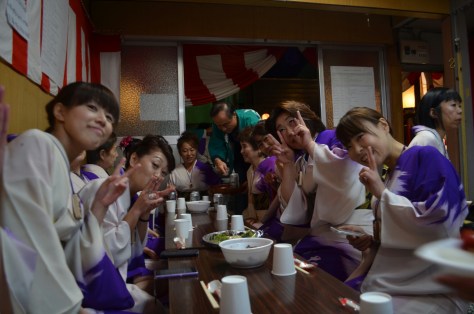Tokyo, where the future comes from. If it is cartoonish or technological, obscure modern fashion or traditional culture, you can find it in Tokyo. But what if your time to explore Tokyo is limited? what can you see/do that will result in the full Tokyo experience?
1. Tokyo tower
The red Eiffel-tower-looking structure in the heart of the city is a must, day or night. During the daylight hours you can take an elevator to the primary viewing platform which can see out over all of Tokyo (and on a good day, see Mt. Fuji). for an extra 700 yen (adult price) you can go up to the highest viewing platform.
Im not sure if you can take the elevator down, (im sure you can if you have a disability,) but I decided to put my young legs to work. Did you know that there are 600 stairs to come down from the main viewing platform. You need to go through the two layers of the 3 story platform, which house cafes and souvenir shops, and down a zigzagging red tunnel of stairs.
In the daytime, the tower is noticed soaring 333 meters (1,092 ft) above the surrounding buildings, and when coming from the JR train station or Dimon subway station, it can be seen accenting an old temple and gate that welcome you to the tower park area. At night, the tower is lit up like a constant firework, seen throughout most of the city.
2. The Hie Shrine
This underrated shrine doesn’t make it to a lot of guide books, and even many of my Japanese teachers hadn’t heard of it. about a thirty minute walk from Tokyo tower, the Hie shrine sits atop a hill in the middle of the city. The main gate and temple, which are ornately decorated and worth a visit themselves, block from view a photographers dream. The shrine, which cosists of many consecutive shrines that turn a stairway into a tunnel, was surprisingly not crowded. It is hard to that that “perfect picture” though, as many people do stick their head in on the opposite side of the tunnel to get a photo themselves. communication here is pretty universal, with waving to the other person then stepping out of the line of sight, and taking turns.
3. Tokyo Sky Tree
So you were impressed with Tokyo tower, but feel that you werent high enough? well then, there is the Tokyo Sky tree, which is 634 meters (2080 ft) tall and towers over even the tallest office buildings in Tokyo. To go to the viewing platform is 2,000 yen (~20 usd).
4 . Asakusa Temple/Senso-ji
Fairly close to the sky tree is the Asakusa temple, or Senso-ji, which is the temple for the Buddhist goddess of mercy.
5. Capsule Hotel
You’re in Tokyo for 12 hours. Maybe you are spending the night, maybe you want some place to crash between flights. Try out the futuristic Capsule hotels. Sorry ladies, there are very few that cater to women, since the idea started as a cheap accommodation for businessmen traveling into Tokyo. With it being the 21st centery and all, but the number that have sections for women are growing.
6. The owl restaurant
This I haven’t been to personally, but was made aware of by a friend who had traveled in to Tokyo for a weekend of fun and exploration. The owl restaurant requires that you sign up ahead of time for a one hour time ut where you get to hang out with an owl. It opens at 10 and spots fill up fast.































